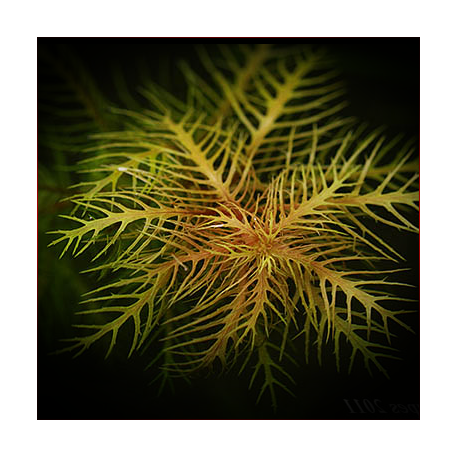More info
Datasheet
| Aquarium Compatible | yes |
| Plant Outdoor | unknown |
| Plant Emersed Growth | yes |
| Plant Growth | medium |
| Temperature Tolerance | 10°C / 50.00°F - 28°C / 82.40°F |
| Temperature | 20°C / 68.00°F - 25°C / 77.00°F |
| Carbonate Hardness | 0-18 kh |
| pH Value | 5-7.5 ph |
| Light | medium-high |
| Carbon Dioxide (CO2) | 15-40mg/lmg/l |
| Nitrate (NO3-) | 10-50mg/lmg/l |
| Phosphate (PO43-) | 0.1-3mg/lmg/l |
| Potassium (K+) | 5-30mg/lmg/l |
| Iron (Fe) | 0.01-0.5mg/lmg/l |
General Description
Proserpinaca palustris, commonly known as mermaid weed, is a plant species belonging to the Haloragaceae family. It is a colorful aquatic plant with red-orange hues and finely structured leaves. This plant is native to the east and south-eastern regions of the USA, various islands in the Caribbean, as well as parts of Central and South America. Different varieties of P. palustris have evolved across its extensive distribution range.
Aquarium Suitability
Mermaid weed is considered suitable for aquariums, offering a medium level of difficulty. It is an optimal choice for smaller aquaria due to its moderate growth rate and compact development. The plant serves as an excellent eyecatcher in the middleground or foreground, adding vibrant colors and a unique texture to the aquatic landscape.
Demands and Hardiness
For successful cultivation, mermaid weed requires medium to high light levels (0.5 watts per liter or more) to ensure healthy growth and maintain its beautiful red-orange coloration. Supplementing the tank with carbon dioxide (CO2) is recommended to support the plant's full potential. Maintaining a low nitrate level (5-10 mg/l) and a higher phosphate level (1.5-2 mg/l) promotes robust and compact growth with deep orange-red hues.
Aquascaping & Usage
Proserpinaca palustris is ideal for aquascaping as it serves as a vibrant accent plant, suitable for backgrounds, midgrounds, and as a colorful highlight in aquarium layouts. Its striking red-orange coloration and distinctive leaves make it an attractive addition to aquascapes, drawing attention to specific areas of the tank.
Propagation
Propagation of mermaid weed is primarily achieved through cuttings. Lateral shoots can be trimmed and replanted to create new plants. When trimming back the plant, re-planting the upper portion of the shoot is recommended for optimal growth. Additionally, leaving the old plant in the aquarium allows new lateral shoots to develop, which can be harvested and replanted for further propagation.
Habitat and Distribution
In its natural habitat, Proserpinaca palustris is found in ditches, ponds, rivulets, and swamplands. The plant thrives in aquatic environments across North and South America, adapting to various water conditions. The Cuban variety of this species differs from its counterparts in North America and is commonly traded in European markets.

